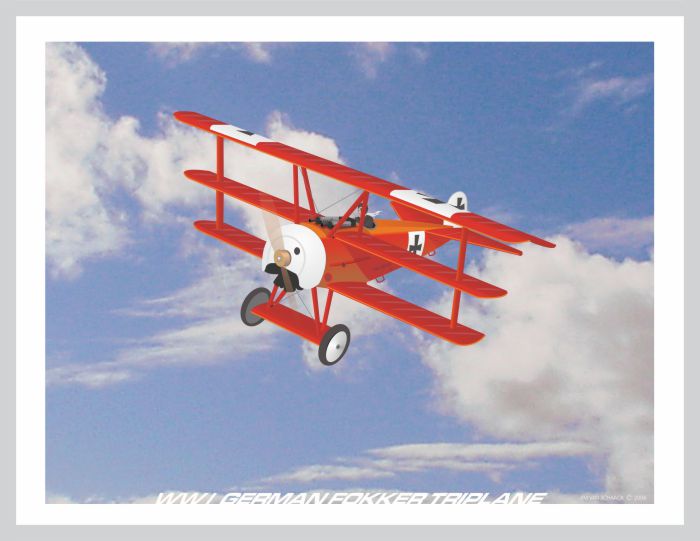
German Fokker Triplane
It wasn’t until World War 1 that aircraft use began on a large scale. Observation balloons that were tethered had already been but to use in several wars to for spotting artillery. Germany used Zeppelins for reconnaissance over the North Sea and the Baltic and they were also used for strategic bombing raids over England and the Eastern Front.
At the outset of the war, the militay was just beginning to use aircraft. Initially, they were used for reconnaissance work. There was a high learning curve for pilots and engineers as they were forced to learn from experience. Soome planes were used as bombers, but the bombs had to be thrown out of the cockpit by hand. As more aircraft were developed, they were fitted with forward facing machine guns which, when they worked correctly, were synchronized to fire through the propeller. All this lead to the development of many specialized types of aircraft, including fighters, bombers, and ground-attack aircraft.
The new heros of the day were ace fighter pilots, who were portrayed as modern knights. The war also saw the appointment of high-ranking officers to direct air war efforts.
Initially the impact of aircraft was tactical rather than strategic. It was the aircraft’s occupants who were in direct cooperation with ground forces and they had the ability to help with ranging and help to keep artillery fire on target. It wasn’t long before the use of aircraft was looked at to play strategic roles in future wars.
WORLD WAR 1 AIRCRAFT Fokker Dr. L German Triplane, Fighter
Manufacturer: Anthony Fokker, Germany
Length: 18’-11”, height: 9’-8”, wingspan: 23’-7”, engine: Oberursel ur,11 9-cylinder, 110 horse power
Range: 185 miles, Max. Speed: 115 mph, Ceiling: 20,000 feet
Gross Weight: 1,292 pounds.
